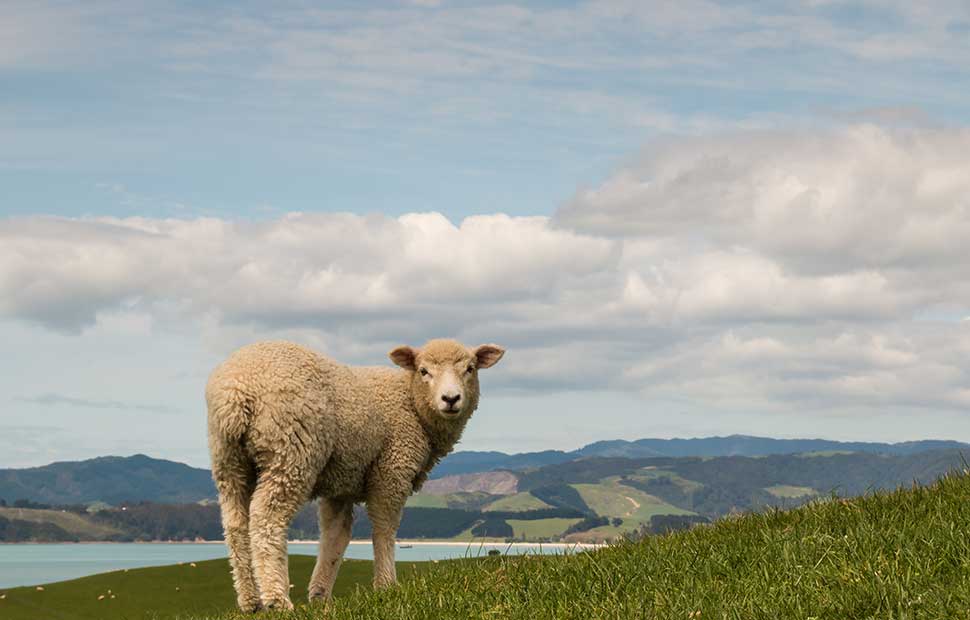Adding sheep to your lifestyle block SPONSORED

From tail length to preventing flystrike, make the welfare of your livestock a top priority.
Words: Ministry for Primary Industries
Sheep or lambs are popular additions to many lifestyle blocks, providing grazing and a source of meat. However, they require lots of care and attention to manage their welfare.
General Sheep Tips
• The amount of feed you have available will guide how many sheep you can have on your block.
• Consider polled (no horn) breeds. Transporting or handling livestock with horns increases the risk of injury for the animal and the handler.
• Sheep should have access to adequate shelter to reduce the risk of thermal stress and adverse weather conditions.
• Sheep are social animals and prefer other sheep for company.
• Unless you have a self-shedding breed, sheep should be shorn at least once a year, ideally before summer. If using a contractor, make sure to book early.
• Consider getting self-shedding or hairy sheep breeds instead of woolly ones that need regular shearing and crutching.
Sheep Health Needs
You should seek advice from your vet or rural service provider on how to manage sheep health.
• Sheep can carry intestinal worms that need to be kept under control. Excessive worms can cause poor growth, diarrhoea, anaemia, weight loss and death.
• Young sheep may need regular worm treatments to keep them healthy. Chat to your vet about nutrition and worm management.
• Facial eczema is caused by a toxin that is present in pastures during summer and autumn. Ask your vet or rural supply store if your region is prone to facial eczema and how to mitigate this risk.
Flystrike in Sheep
Flystrike occurs when blowflies lay eggs in warm, moist areas on a sheep’s body, such as near the rear end or on wounds. These eggs hatch into maggots which can burrow inside flesh. It is common in warm and humid conditions.
• You are required to take all reasonable steps to prevent and identify flystrike in
your sheep.
• Sheep that have flystrike must receive appropriate treatment as soon as possible. The highest seasonal risk of flystrike is during summer/early autumn.
• Check out this article previously published in NZ Lifestyle Block magazine around the specifics of prevention and management of flystrike.
Tail length and prevention of flystrike
Tail-docking can be done for cleanliness and to reduce the risk of flystrike.
• The risk of flystrike is increased by having a tail either too long or
too short.
• For sheep under six months old, you must not shorten the tail any shorter than the distal end of the caudal fold. This is the point where the two folds of skin attach on the underside of the tail.
• Aim to leave enough tail to cover the vulva in ewes or a similar length in rams.
• When tail docking, you must use a hot iron or a rubber ring.
• For sheep over six months old, tail docking must be carried out by a vet using pain relief.
Your legal responsibilities as an animal owner:
Your animals are your responsibility, and you need to plan for them accordingly. Under the Animal Welfare Act 1999, you must provide your animals with:
• Proper and sufficient food and water;
• Adequate shelter;
• The opportunity to display normal patterns of behaviour;
• Appropriate physical handling;
• Protection from and rapid diagnosis of injury and disease.
Where can I find out more?
• Check out the Sheep and Beef Cattle Code of Welfare and the regulations at www.mpi.govt.nz.
• Chat to your veterinarian or rural supply store
• Or contact MPI on animal.welfare@mpi.govt.nz.
Love this story? Subscribe now!
 This article first appeared in NZ Lifestyle Block Magazine.
This article first appeared in NZ Lifestyle Block Magazine.
